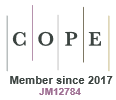Changes in methane emission and rumen fermentation parameters induced by refaunation in sheep
D. P. Morgavi A B , J. -P. Jouany A and C. Martin AA INRA, UR1213 Herbivores, Site de Theix, F-63122 Saint-Genès-Champanelle, France.
B Corresponding author. Email: morgavi@clermont.inra.fr
Australian Journal of Experimental Agriculture 48(2) 69-72 https://doi.org/10.1071/EA07236
Submitted: 3 August 2007 Accepted: 26 September 2007 Published: 2 January 2008
Abstract
Elimination of protozoa or defaunation is known to reduce methane emission by ruminants. However, the long-term efficacy of this practice is not well documented. In this work methane and other end products of fermentation were monitored in five adult, rumen-cannulated wethers that had been kept defaunated for two years (Def1) and successively refaunated (Fau, 12 weeks) and defaunated (Def2) during a 6-month-long experiment. Methane was measured for periods of 4 days at about 4-weekly intervals using the SF6 tracer technique, and rumen content samples were taken regularly throughout the experiment. Refaunation was performed by single administration of a mixed protozoal inoculum (103 cells). A noticeable protozoal population was observed at 12 days after inoculation, which was followed by an exponential increase that peaked at 12 ± 3 × 105 cells/mL rumen fluid at 4 weeks and decreased thereafter to 8 ± 4 × 105 cells/mL at the end of the 12-week Fau period. Production of methane, which was 33 ± 8 L/animal.day in Def1, increased (P < 0.05) up to 42 ± 5 L at the end of the Fau period and dropped back at the end of Def2 to 35 ± 7 L (Def1 v. Def2, P > 0.05). Even though protozoal numbers were comparable to conventional animals 20 days after inoculation, the increase in methane production was observed later, at 8 weeks, suggesting that protozoa are not the only microbial factor favouring methanogenesis and that the ecosystem needs a relatively long adaptation time following protozoal introduction to optimise this function. The presence of protozoa did not affect total volatile fatty acids and acetate concentration in the rumen but increased butyrate, while decreasing propionate concentration (Fau v. Def1, Def2, P < 0.05). These results show that the decrease in methane emissions induced by defaunation in sheep was stable for a period of up to 2 years. In the absence of protozoa, methane decreased by ~20% in both short- and long-term defaunated animals.
Acknowledgements
The authors are grateful to M. Fabre and S. Alcouffe for the care of animals and D. Graviou and Y. Rochette for their technical assistance.
Boadi D,
Benchaar C,
Chiquette J, Masse D
(2004) Mitigation strategies to reduce enteric methane emissions from dairy cows: update review. Canadian Journal of Animal Sciences 84, 319–335.

Broudiscou L-P,
Papon Y, Broudiscou A
(1999) Effects of inorganic nitrogen and amino acids on the degradation of ammonia-treated barley straw and proteosynthesis in a continuous culture of rumen microbes. Animal Feed Science and Technology 77, 149–162.
| Crossref | GoogleScholarGoogle Scholar |
CAS |

Casey JW, Holden NM
(2005) Analysis of greenhouse gas emissions from the average Irish milk production system. Agricultural Systems 86, 97–114.
| Crossref | GoogleScholarGoogle Scholar |

Eugene M,
Archimede H, Sauvant D
(2004) Quantitative meta-analysis on the effects of defaunation of the rumen on growth, intake and digestion in ruminants. Livestock Production Science 85, 81–97.
| Crossref | GoogleScholarGoogle Scholar |

Fonty G,
Senaud J,
Jouany JP, Gouet P
(1988) Establishement of ciliate protozoa in the rumen of conventional and conventionalized lambs: influence of diet and management conditions. Canadian Journal of Microbiology 34, 235–241.
|
CAS |
PubMed |

Hegarty RS
(1999) Reducing rumen methane emissions through elimination of rumen protozoa. Australian Journal of Agricultural Research 50, 1321–1327.
| Crossref | GoogleScholarGoogle Scholar |

Johnson K,
Huyler M,
Westberg H,
Lamb B, Zimmerman P
(1994) Measurement of methane emissions from ruminant livestock using a Sf6 tracer technique. Environmental Science & Technology 28, 359–362.
| Crossref | GoogleScholarGoogle Scholar |
CAS |

Jouany JP, Senaud J
(1979) Defaunation of the sheep rumen. Annales de Biologie Animale, Biochimie, Biophysique 19, 619–624.
| Crossref |

Morgavi DP,
Boudra H,
Jouany JP, Graviou D
(2003) Prevention of patulin toxicity on rumen microbial fermentation by SH-containing reducing agents. Journal of Agricultural and Food Chemistry 51, 6906–6910.
| Crossref | GoogleScholarGoogle Scholar |
CAS |
PubMed |

Moss AR,
Jouany JP, Newbold J
(2000) Methane production by ruminants: its contribution to global warming. Annales de Zootechnie 49, 231–253.
| Crossref | GoogleScholarGoogle Scholar |
CAS |

Ogino A,
Orito H,
Shimada K, Hirooka H
(2007) Evaluating environmental impacts of the Japanese beef cow-calf system by the life cycle assessment method. Animal Science Journal 78, 424–432.
| Crossref | GoogleScholarGoogle Scholar |

Pinares-Patiño CS,
Baumont R, Martin C
(2003) Methane emissions by Charolais cows grazing a monospecific pasture of timothy at four stages of maturity. Canadian Journal of Animal Sciences 83, 769–777.

Ranilla MJ,
Morgavi DP, Jouany JP
(2004) Effect of time after defaunation on methane production in vitro. Reproduction, Nutrition, Development 44, S35–S36.

Weatherburn MW
(1967) Phenol-hypochlorite reaction for determination of ammonia. Analytical Chemistry 39, 971–974.
| Crossref | GoogleScholarGoogle Scholar |
CAS |



